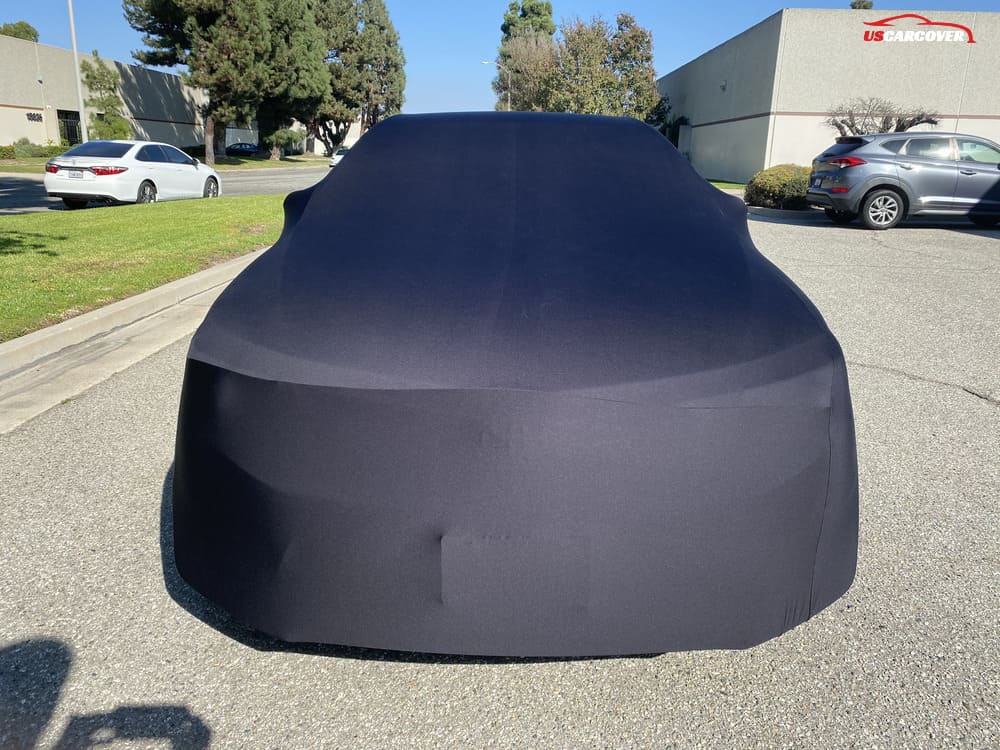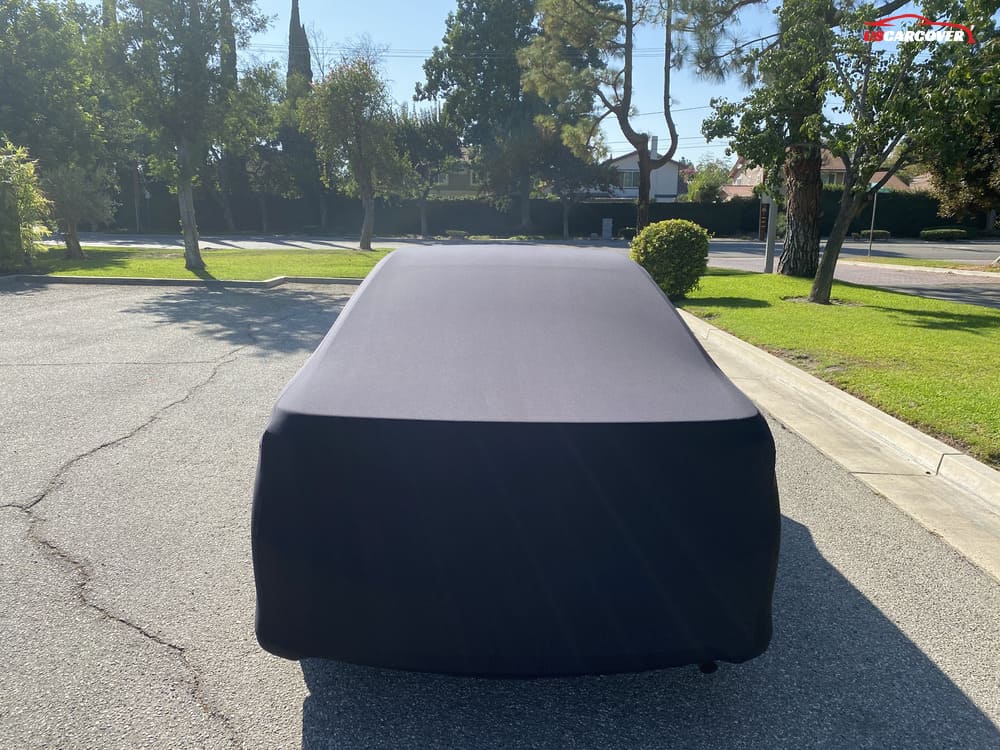
Car covers are a necessary accessory when you own a car. Choosing the right car cover that fits your car not only helps you save money but also protects your car in the most perfect way. Besides choosing outdoor car covers to reduce environmental impact, choosing indoor car covers is equally important. There are many types of car covers on the market. With nearly 20 years of experience retailing our car covers. Today, Us Car Cover will analyze the 4 best materials for indoor car covers.
1. Polypropylene cotton
Polypropylene cotton is a synthetic material commonly used in many industries, including apparel, automotive manufacturing, and consumer products like car covers. The analysis of this material can be considered from the following aspects:
Structure and Properties
- Polypropylene (PP): Polypropylene is a type of thermoplastic with high durability, good resistance to chemicals, and harsh environments. It does not absorb water, is lightweight, and has insulating and electrical resistance properties.
- Cotton: Cotton is a natural material that is soft, highly absorbent, and breathable. When combined with polypropylene, it enhances the comfort and softness of the product.
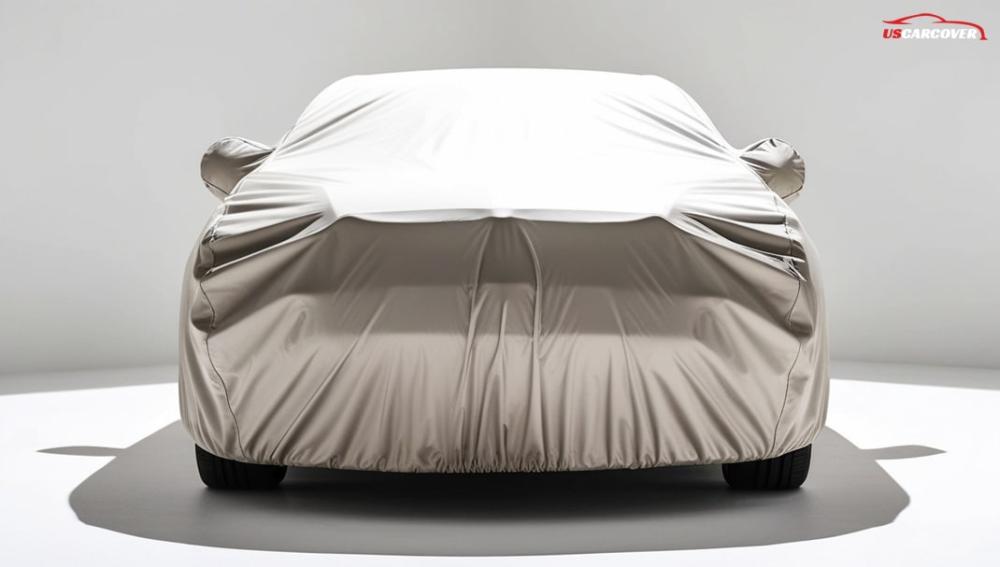
Advantages
- Water Resistance: Polypropylene is waterproof, providing excellent protection in wet weather conditions. When combined with cotton, it retains breathability while still being water-resistant.
- Insulation: Thanks to the insulating properties of polypropylene, products made from polypropylene cotton can retain heat and protect surfaces from high temperatures.
- High Durability: Polypropylene is tear-resistant and durable, helping the product last longer. It also resists mold and bacteria growth.
Disadvantages
- Not Environmentally Friendly: Polypropylene is a type of plastic that is difficult to decompose and can harm the environment if not disposed of properly.
- Flammable: Polypropylene is flammable, so caution is needed when using it near heat sources.\
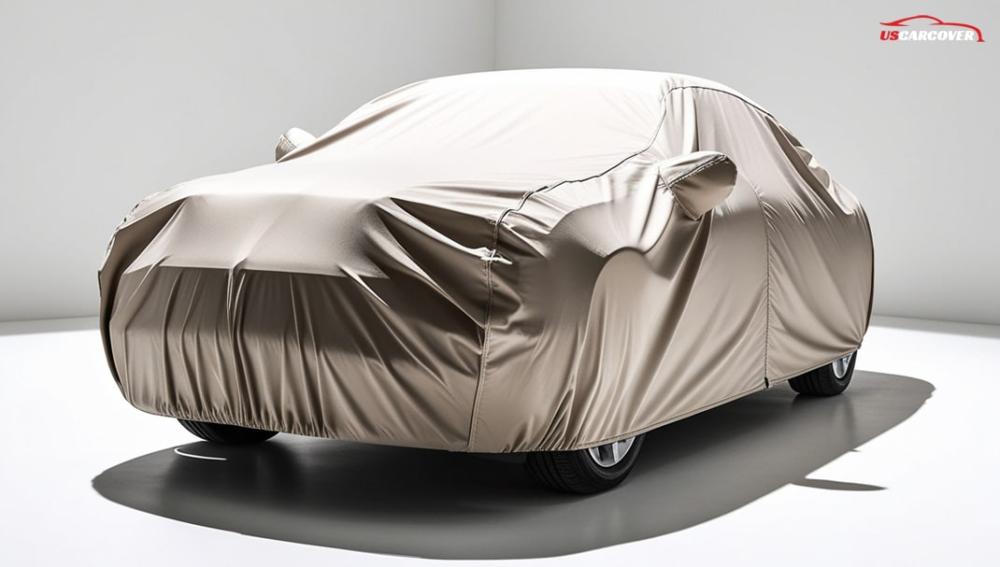
Application in Car Covers
Polypropylene cotton is widely used in the production of car covers due to its water resistance, insulation, and durability. Products made from this material are typically lightweight, easy to fold, and portable.
Related Articles: Do Car Covers Really Protect Against Hail Damage?
2. Cotton Velvet/Flannel
Cotton velvet and flannel are two types of materials commonly used for soft, protective layers in various products, including car covers, furniture covers, and apparel. Here's a breakdown of these materials:
Structure and Properties
-
Cotton Velvet: Cotton velvet is a luxurious fabric made from cotton fibers, characterized by its soft, dense pile and smooth texture. The surface of velvet has a slight sheen due to the way the fibers are woven and cut, which gives it a rich, elegant appearance. Cotton velvet is breathable, absorbent, and naturally hypoallergenic, making it a comfortable material for various applications.
-
Flannel: Flannel is a soft, woven fabric made from cotton or wool, known for its warmth and comfort. When made from cotton, it has a brushed surface, which makes it extra soft and cozy. Flannel is highly breathable and absorbent, with excellent insulating properties, which makes it suitable for protecting sensitive surfaces from temperature changes and scratches.
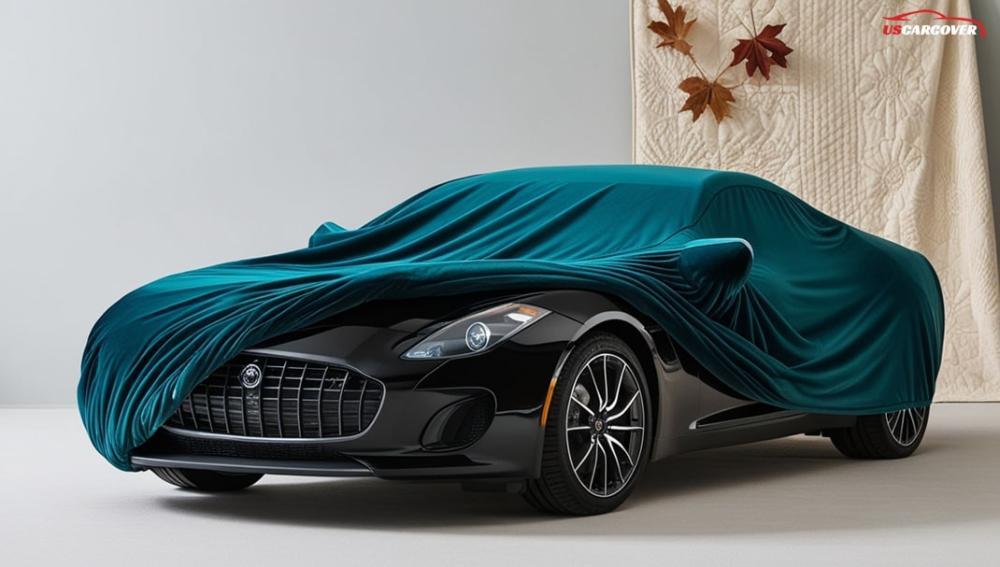
Advantages
-
Soft and Gentle on Surfaces: Both cotton velvet and flannel are soft materials, ideal for protecting delicate surfaces like a car’s paint or furniture from scratches and abrasions. These materials are often used as inner linings in car covers to prevent damage.
-
Breathable and Absorbent: Cotton velvet and flannel allow air to circulate, reducing the risk of moisture buildup that can lead to mold or mildew. This is especially important for indoor car covers where condensation could be a concern.
-
Insulation Properties: Flannel is known for its excellent insulating qualities, which can help to regulate temperature and protect a car’s surface from temperature fluctuations. Cotton velvet also provides some degree of insulation, though it is often used more for its softness and aesthetic appeal.
-
Durability and Protection: Both materials are durable when properly cared for. Flannel, being a thicker material, provides additional padding and protection for sensitive surfaces. Cotton velvet, while softer and more luxurious, can also offer protection due to its dense pile.
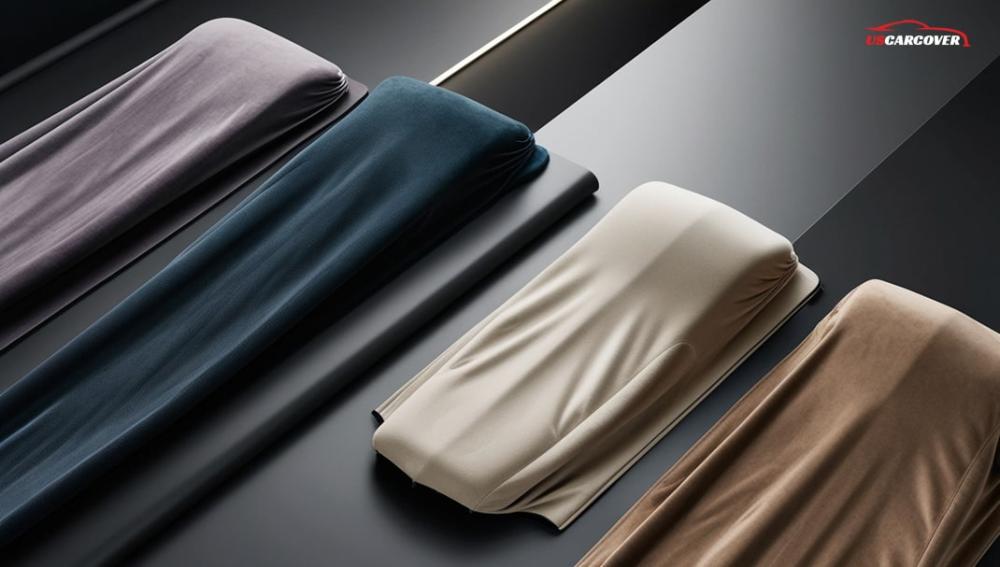
Disadvantages
-
Maintenance: Both cotton velvet and flannel require careful maintenance to prevent wear and tear. Velvet can attract dust and lint, and flannel may lose its softness over time if not washed and stored properly.
-
Water Absorbent: Unlike synthetic materials like polypropylene, both cotton velvet and flannel absorb water. This means they are not ideal for outdoor use unless combined with a water-resistant outer layer. If left in damp environments, they may promote the growth of mold or mildew.
-
Cost: Cotton velvet, in particular, can be more expensive than other materials due to its luxurious feel and aesthetic properties. Flannel, while generally more affordable, may still cost more than synthetic alternatives.
Application in Car Covers
-
Interior Lining: Cotton velvet and flannel are typically used as inner layers in premium car covers. The soft texture of these materials helps to prevent scratches on the car’s paint, while the breathable nature prevents moisture buildup.
-
Indoor Use: These materials are ideal for indoor car covers where the primary goal is to protect the vehicle from dust, dirt, and minor scratches without exposure to rain or harsh weather.
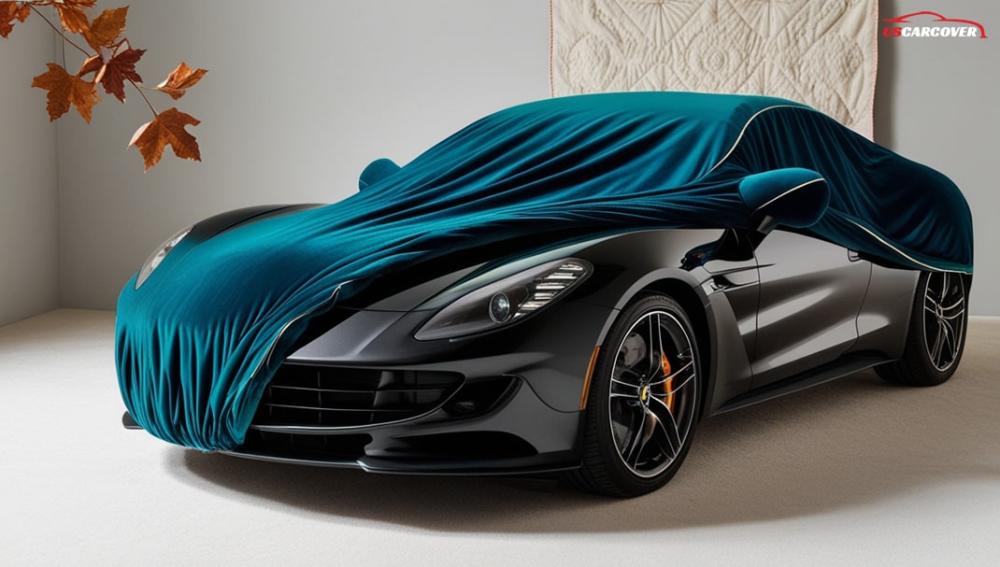
Cotton velvet and flannel are excellent materials for protective linings due to their softness, breathability, and insulating properties. However, their absorbent nature makes them better suited for indoor or low-moisture environments. In car covers, they are typically combined with a more durable, water-resistant outer material to enhance overall protection.
Related Articles: The Best Car Covers for Long-Term Storage | Protect Your Vehicle
3. Hydroentangled Non-Woven Fabric
Hydroentangled non-woven fabric, also known as spunlace fabric, is a versatile material widely used in various industries due to its unique properties. It is created through a process called hydroentanglement, where high-pressure water jets are used to bind fibers together, forming a fabric without the need for adhesives or chemical bonding agents.
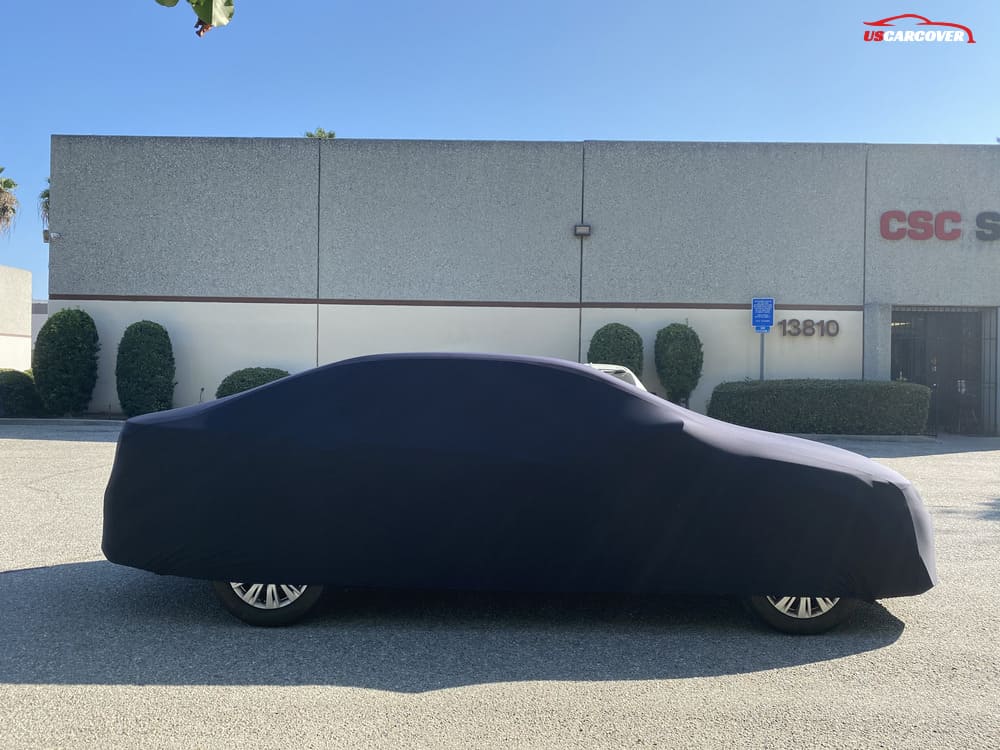
Structure and Properties
-
Non-Woven Nature: Unlike traditional woven or knitted fabrics, hydroentangled non-woven fabric is formed by entangling fibers mechanically rather than weaving or knitting them. This process creates a durable, uniform fabric that can have varying thicknesses and strengths, depending on the application.
-
Fibers Used: Hydroentangled fabrics can be made from a wide range of fibers, including natural fibers like cotton or synthetic fibers such as polyester, polypropylene, or a blend of materials. The choice of fiber affects the final properties of the fabric, such as its softness, strength, absorbency, and breathability.
-
High-Pressure Water Bonding: The process of using water jets to entangle the fibers allows for strong bonding without the need for chemicals, making the fabric more environmentally friendly and free of chemical residues. This also results in a fabric that is highly durable yet soft.
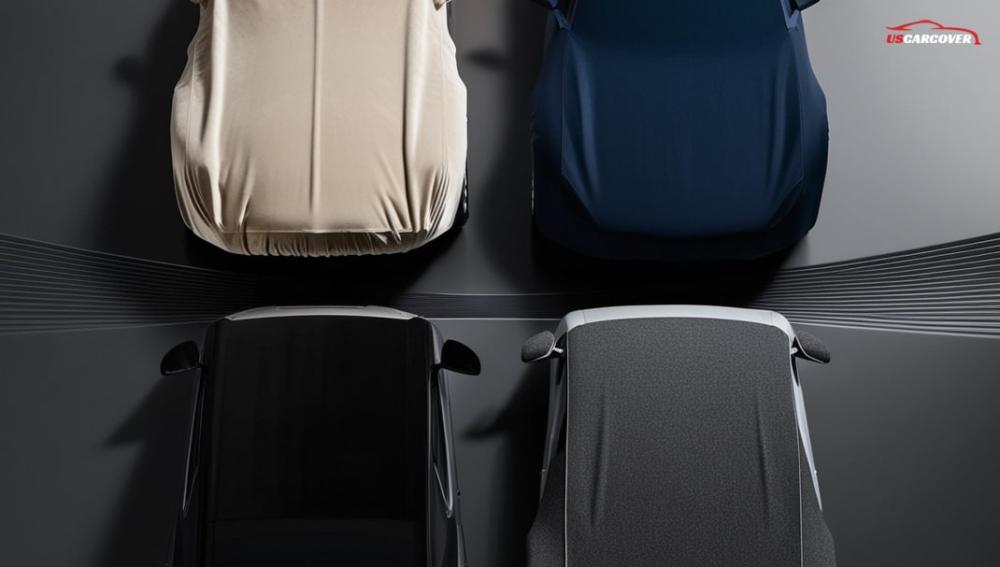
Advantages
-
Durability and Strength: Hydroentangled non-woven fabrics are known for their high tensile strength and tear resistance, making them ideal for applications requiring durability. They are often used in medical textiles, hygiene products, and industrial applications.
-
Breathability and Absorbency: Depending on the fibers used, hydroentangled fabrics can be highly breathable and absorbent. This makes them suitable for applications like wipes, cleaning cloths, and protective layers where moisture management is important.
-
Softness: The hydroentanglement process results in a fabric that is soft and gentle to the touch, making it ideal for use in products that come into contact with sensitive surfaces or skin. This makes it a great choice for the inner lining of car covers or other protective applications.
-
Lightweight and Flexible: Despite their durability, hydroentangled non-woven fabrics are lightweight and flexible. This makes them easy to handle and fold, and they can be molded to fit various shapes and surfaces, such as custom car covers.
-
Chemical-Free Bonding: The absence of adhesives and chemical binders makes hydroentangled non-woven fabrics safer for certain applications, particularly in industries that prioritize chemical-free production.
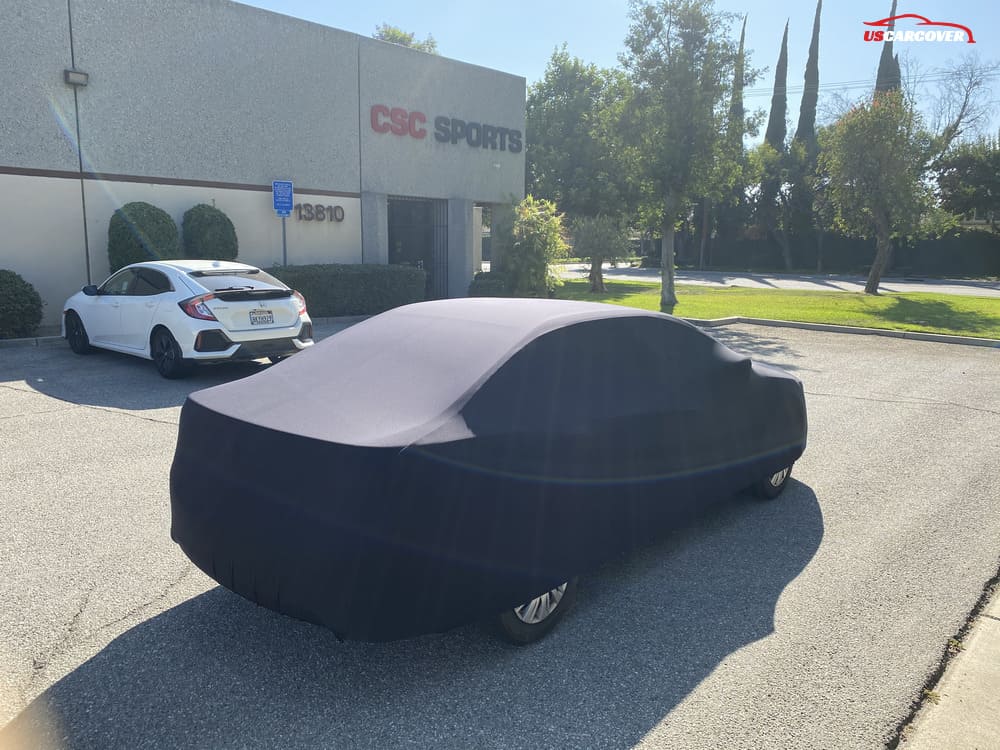
Disadvantages
-
Not Waterproof by Itself: Although hydroentangled non-woven fabrics can be designed to have varying degrees of absorbency, they are generally not waterproof unless treated with additional coatings or layers. For outdoor use, this material often requires a waterproof outer layer.
-
Limited Reusability: In some applications, especially in single-use products like wipes or medical textiles, hydroentangled non-woven fabrics may not be as reusable or long-lasting as woven fabrics, though this depends on the specific product design and fiber composition.
-
Degradation Over Time: Depending on the fiber composition, hydroentangled non-woven fabrics made from synthetic fibers like polypropylene may not biodegrade easily. However, natural fiber versions like cotton are more eco-friendly and degrade more readily.
Related Articles: 5 Affordable Car Covers Under $100
Application in Car Covers
-
Inner Layer Protection: Hydroentangled non-woven fabrics are commonly used in car covers as the inner lining material. The soft and breathable nature of the fabric helps protect the car’s surface from scratches and abrasions, while also allowing air to circulate, reducing the risk of moisture buildup.
-
Custom Fit: The flexibility and lightweight properties of hydroentangled fabric make it an ideal choice for car covers that need to fit snugly around different vehicle shapes. It can conform to the contours of the car, providing enhanced protection.
-
Layered Structure: In many car covers, hydroentangled non-woven fabric is used in combination with other materials. For example, it may serve as the inner layer, while the outer layer is made of waterproof or UV-resistant materials, providing comprehensive protection for the vehicle.
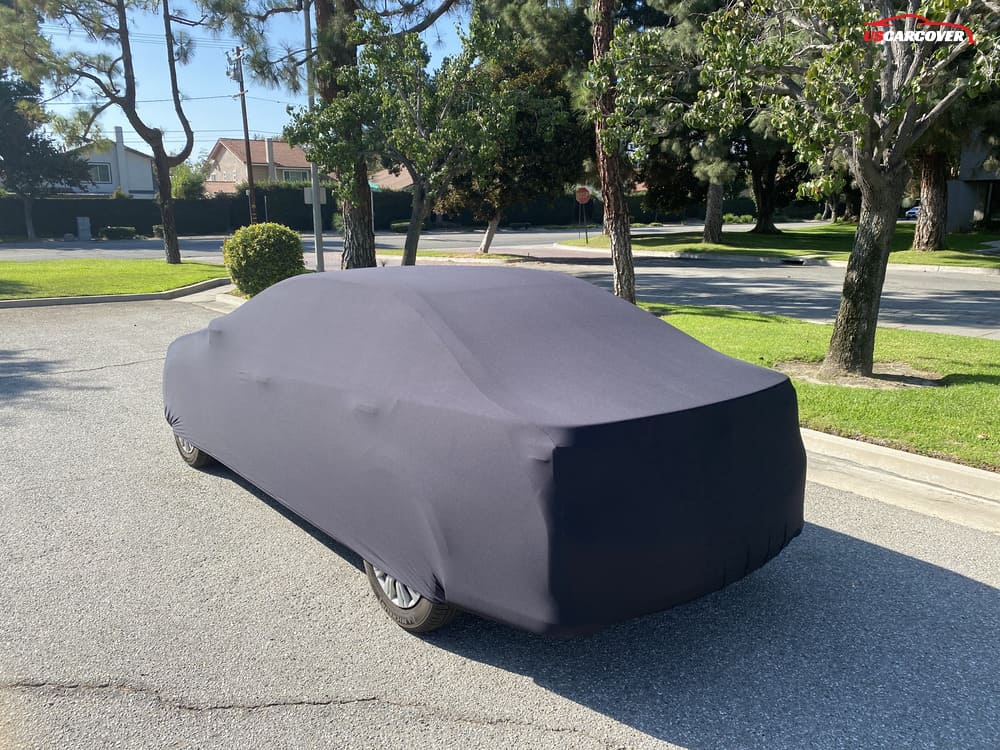
Hydroentangled non-woven fabric is a versatile and durable material with significant advantages in terms of softness, breathability, and strength. Its flexibility and lightweight nature make it particularly useful for car cover applications, especially as an inner lining that protects against scratches and promotes air circulation. However, it typically needs to be paired with other materials to provide full weatherproof protection for outdoor use.
4. Satin or polyester satin
Satin and polyester satin are widely used materials known for their smooth, glossy appearance and soft texture. Satin refers to a type of weave rather than a material, meaning it can be made from various fibers, including silk, nylon, polyester, or blends. When satin is made from polyester, it is called polyester satin. This material offers the luxurious feel of satin while being more affordable and durable than silk satin.
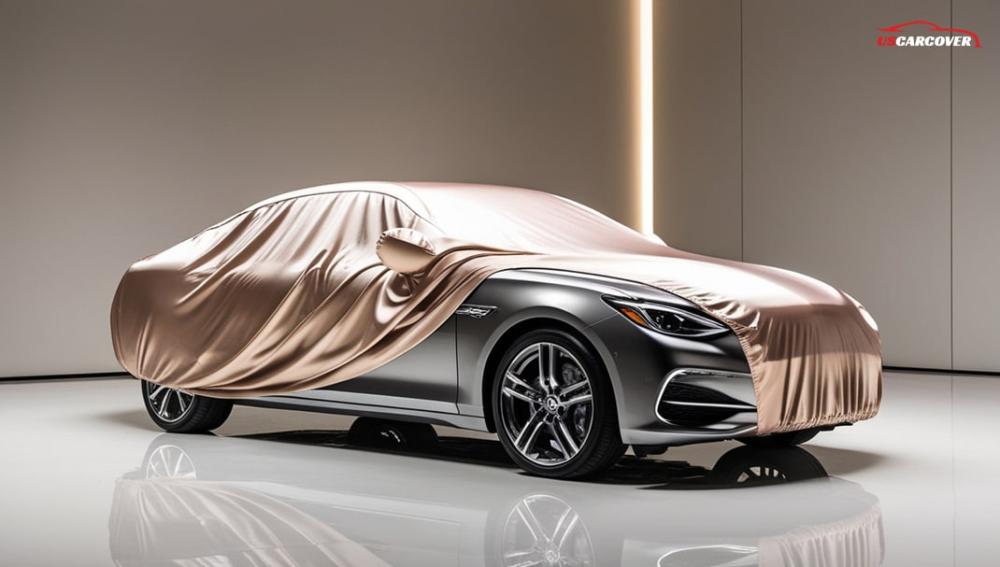
Structure and Properties
-
Satin Weave: Satin is distinguished by its weave, which involves floating warp threads over weft threads, giving the fabric a smooth, glossy front surface and a duller back. This weaving technique produces a fabric with a shiny, lustrous appearance and a silky feel.
-
Polyester Fibers: Polyester satin is made from synthetic polyester fibers. Polyester is known for its durability, resistance to shrinking and stretching, and quick-drying properties. Polyester satin is often chosen over silk because it is less expensive, easier to care for, and more resistant to wear and tear.
Advantages
-
Luxurious Appearance: One of the primary reasons satin is used is its luxurious, shiny surface, which adds an elegant, premium look. This makes it desirable for high-end products like luxury car covers, interior linings, or decorative purposes.
-
Softness and Smoothness: Satin has a smooth, soft texture that is gentle on surfaces, making it an excellent choice for protecting delicate finishes, such as car paint. It reduces the risk of scratches or abrasions when used as an inner lining in car covers.
-
Durability (Polyester Satin): Polyester satin, in particular, is highly durable. Polyester fibers are resistant to tearing, wrinkling, and stretching, which extends the longevity of products made from this fabric. This makes it a good option for protective coverings and other applications where durability is important.
-
Lightweight and Breathable: Despite its glossy appearance, polyester satin is lightweight and relatively breathable, allowing for air circulation while providing a sleek layer of protection.
-
Water Resistance: While satin itself is not inherently waterproof, polyester satin has some degree of water resistance due to the nature of polyester fibers. This can offer minimal protection against moisture when used indoors or in moderate conditions. However, additional waterproof layers are typically required for outdoor use.
-
Affordability: Polyester satin provides a cost-effective alternative to natural silk satin. It delivers a similar luxurious look and feel without the high price point, making it accessible for a wider range of uses.
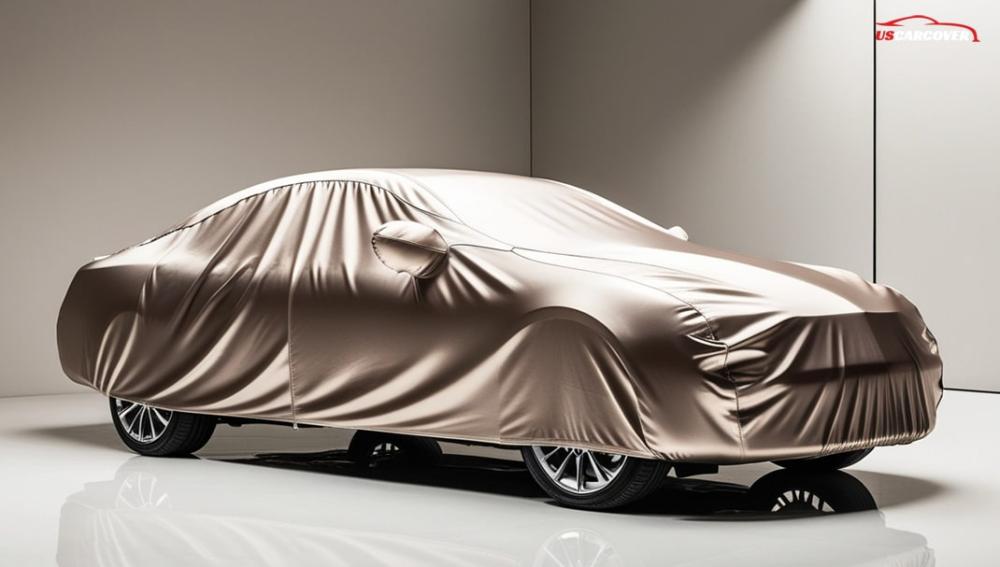
Related Articles: How to Prevent Your Car Cover from Being Stolen: Top Tips and Security Solutions
Disadvantages
-
Prone to Snagging: Satin, especially polyester satin, can be prone to snagging on sharp objects due to its smooth, shiny surface. This can lead to damage if not handled with care.
-
Slippery Texture: The sleek, slippery nature of satin may cause some difficulties in certain applications. For example, a satin-lined car cover may slip more easily when being put on or removed, especially if it doesn’t fit tightly around the vehicle.
-
Less Breathable than Natural Fabrics: Although polyester satin has some breathability, it is less breathable than natural fibers like cotton. This could result in trapped heat or moisture, which may lead to condensation buildup if used in humid environments.
-
Not Biodegradable: Polyester is a synthetic material, meaning polyester satin is not biodegradable. While durable and long-lasting, the environmental impact of polyester is a consideration, especially for eco-conscious consumers.
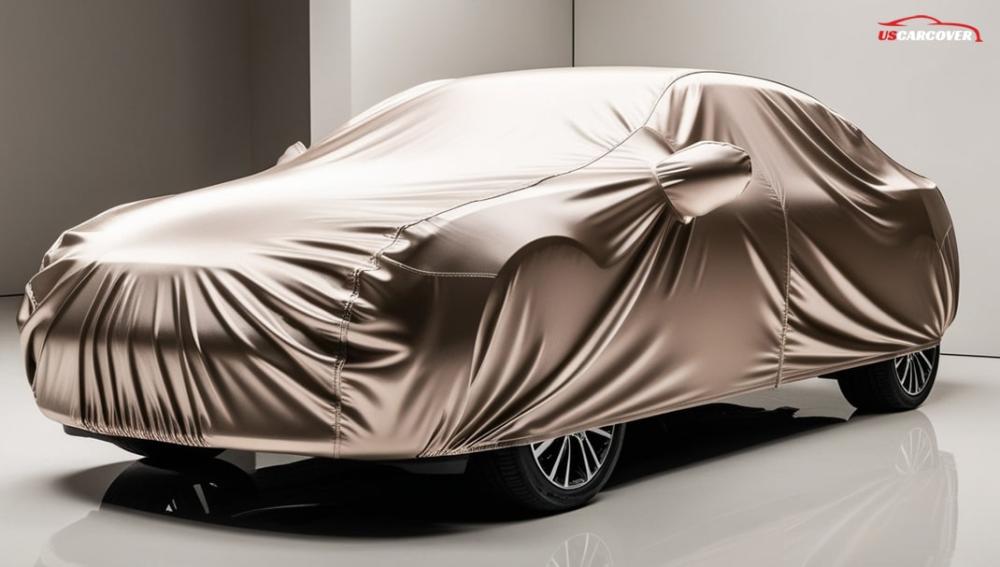
Application in Car Covers
-
Protective Lining: Satin or polyester satin is commonly used as an inner lining in car covers. The smooth, soft surface helps prevent scratches on the car’s paint and other sensitive surfaces. Its gentle nature is particularly suited for high-end or luxury vehicles where maintaining a flawless finish is critical.
-
Premium Car Covers: For luxury car covers, satin offers an attractive aesthetic along with protection. It can provide a polished, elegant look for car covers intended for indoor use, where the primary focus is on protecting the vehicle from dust and minor abrasions rather than harsh environmental conditions.
-
Layered with Other Materials: Polyester satin is often layered with other materials in car covers. It is used as the inner lining in combination with more durable, waterproof, or UV-resistant outer materials to create a cover that is both protective and visually appealing.
Satin, particularly polyester satin, is an excellent material for applications requiring a balance of luxury, softness, and durability. It provides a glossy, elegant look while offering sufficient protection against scratches and minor abrasions. However, due to its slipperiness, susceptibility to snags, and lack of waterproofing, it is best suited for indoor car covers or as an inner lining when combined with other protective layers. Polyester satin’s affordability and durability make it a practical yet stylish choice in various protective coverings.
